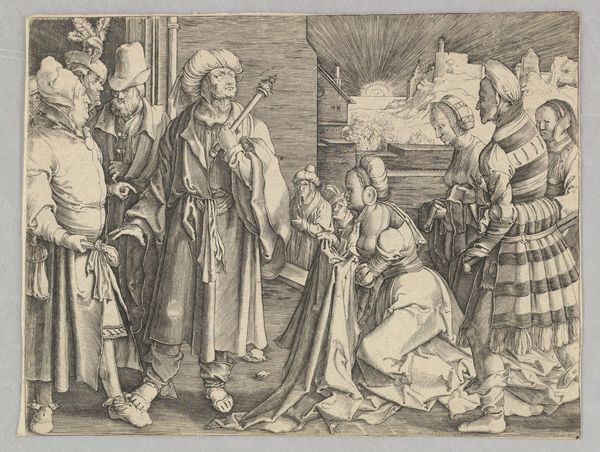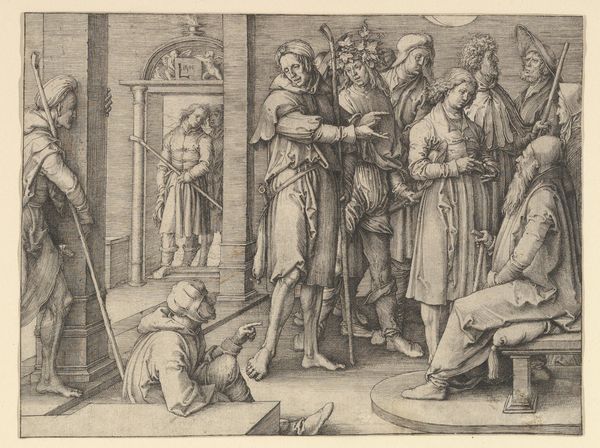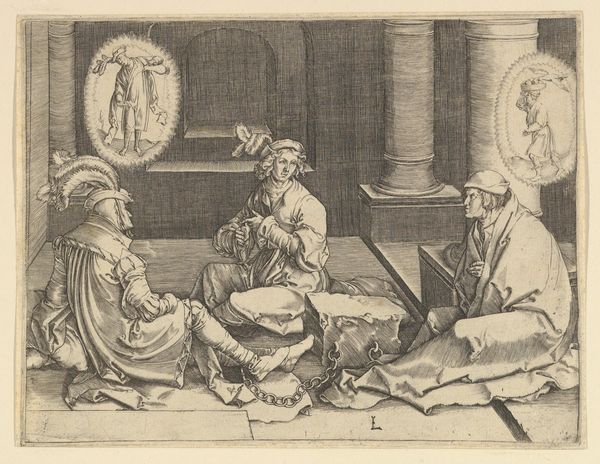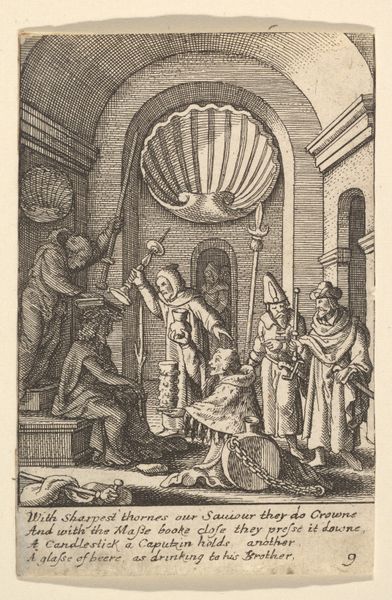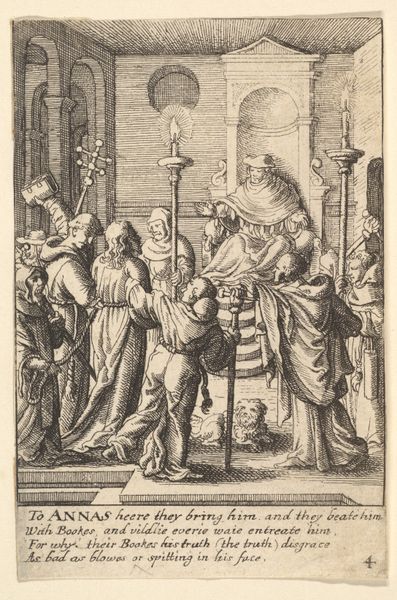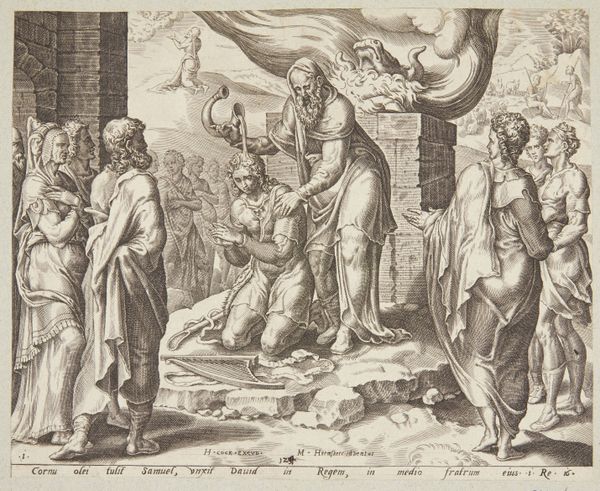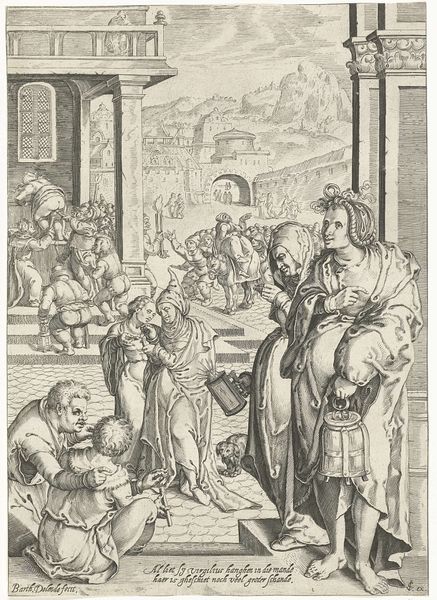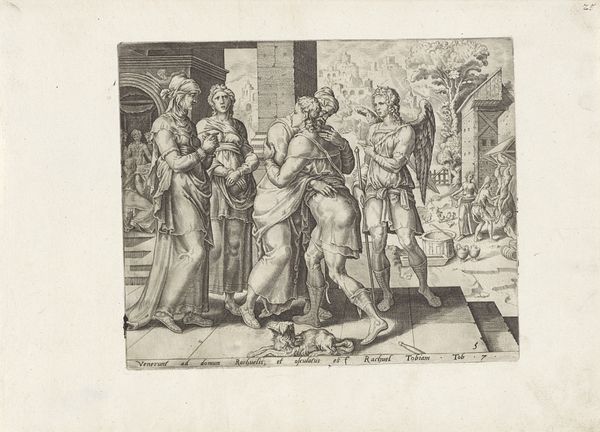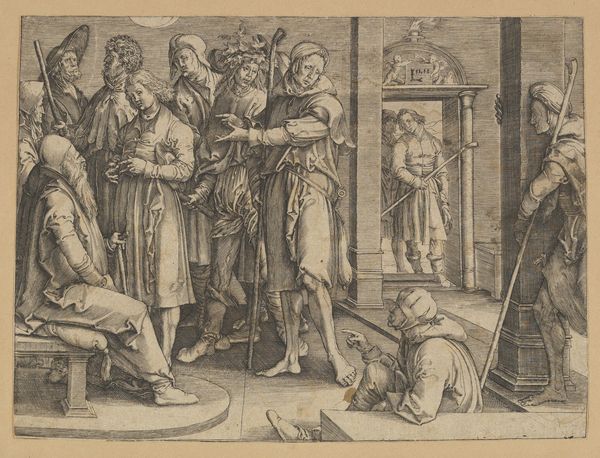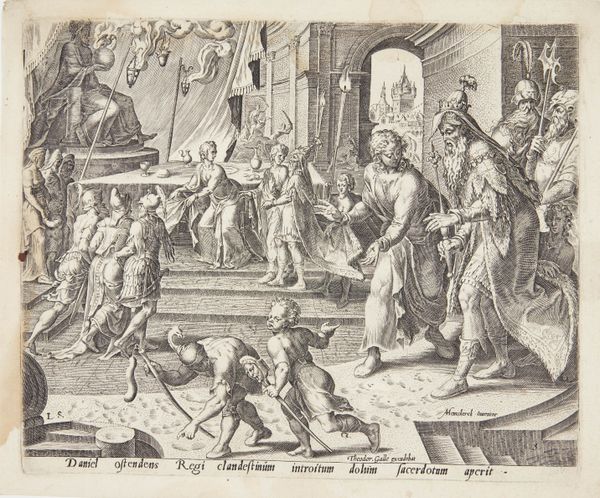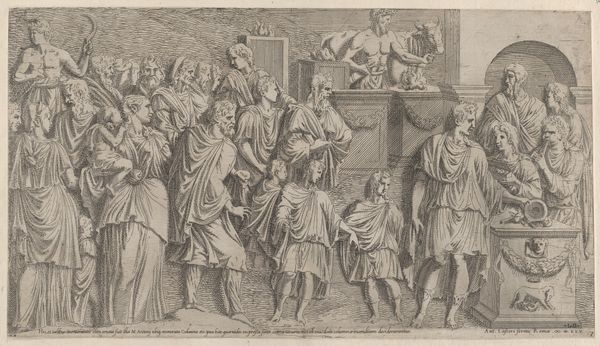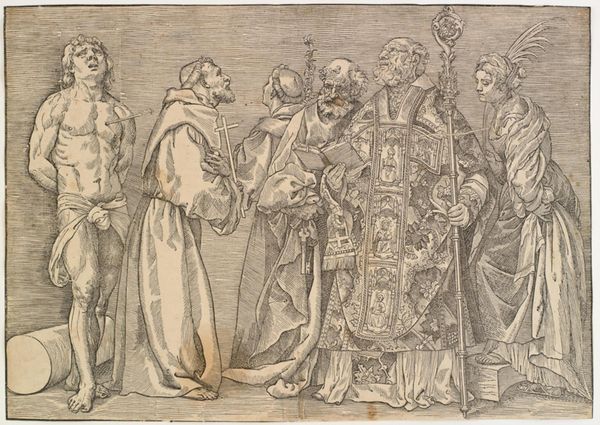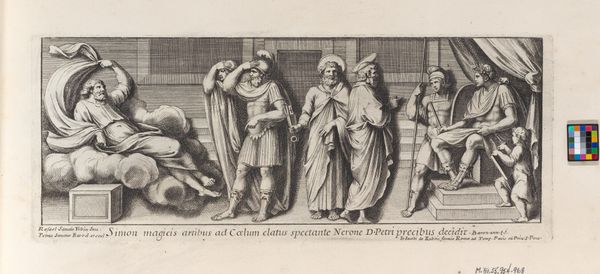
drawing, print, engraving
#
drawing
#
narrative-art
#
pen drawing
# print
#
figuration
#
history-painting
#
northern-renaissance
#
engraving
Dimensions: sheet: 4 13/16 x 6 1/4 in. (12.2 x 15.9 cm)
Copyright: Public Domain
Curator: This engraving is "Potiphar's Wife Accuses Joseph" by Lucas van Leyden, created around 1512. It's currently held at the Metropolitan Museum of Art. The precision in such a small format always impresses me. What’s your immediate response? Editor: There's such clear differentiation in textures, and even beyond that, in qualities. Look at the draped cloth of Potiphar's wife. You immediately sense a quality of being both rich and falsely presented, like a facade meant to deceive, juxtaposed against other, less conspicuous textures. Curator: Precisely. Van Leyden's use of line creates a compositional dichotomy between foregrounded figures versus background landscapes and domestic interiors, providing contextual depth for the viewer. It’s not merely about depicting figures, but about situating them within a moral and visual landscape. Editor: And this moral landscape seems deeply rooted in material concerns. Consider the opulence displayed in clothing versus the very deliberate restraint and modesty elsewhere. These objects aren't mere decoration. Instead they seem deliberately placed within social interactions. Curator: Indeed, these signifiers reinforce status, and draw viewers to see how Potiphar's outrage is reinforced by such carefully drawn objects that highlight his material position. The light further accentuates her figure and her accusal. Editor: Consider how that light, though artistically rendered, required resources to manipulate. How much candle or lamp oil was involved? Where did that raw material come from? Or consider how each textile reflects sheep or plant husbandry, the labor of weaving, and trading practices. It suggests the social implications for all things rendered. Curator: That opens exciting avenues for investigation! The engraving really underscores the drama with clarity, particularly because there isn't any reliance on colour to guide your eye around the scene, every line has to work! Editor: Van Leyden's technique forces you to acknowledge the network of processes involved in its creation, which enhances the narrative and makes it especially compelling. Curator: I am struck once again by the interplay of line and space, leading to nuanced layers of meaning within what appears at first as merely another Old Testament depiction. Editor: I am intrigued by the image’s embedded labor, prompting us to consider art’s deep relationship to manufacturing, consumption, and societal structures, even now.
Comments
No comments
Be the first to comment and join the conversation on the ultimate creative platform.
